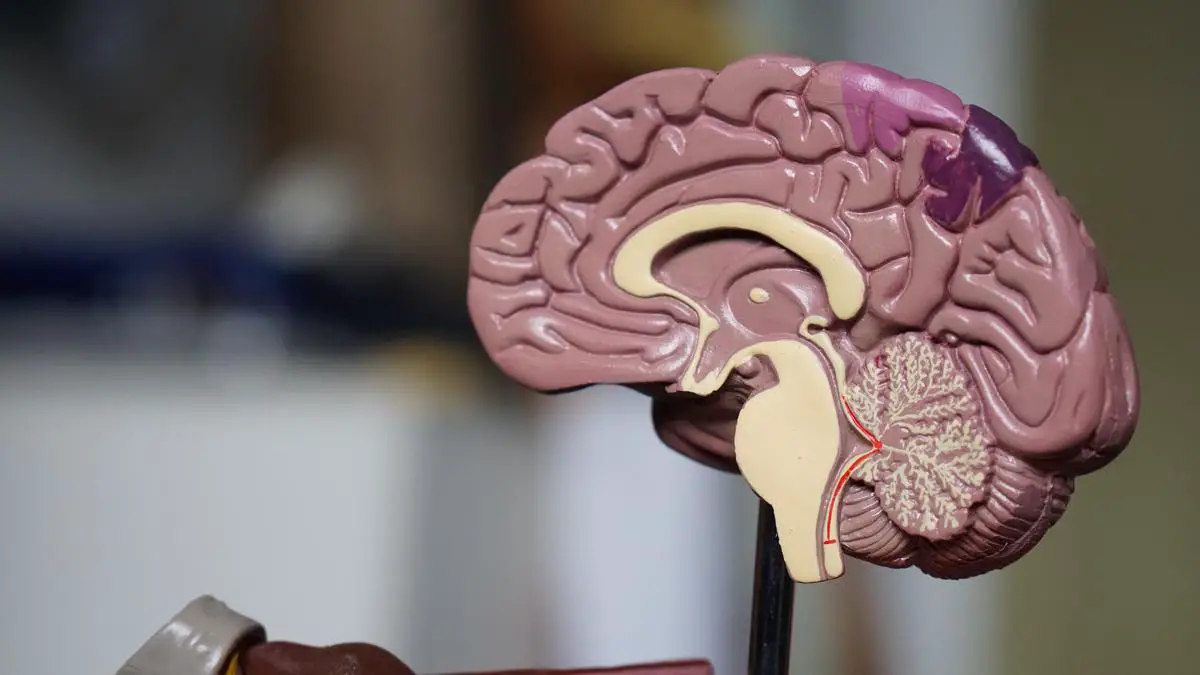Stress, a common phenomenon in modern society, manifests in various ways, often directly affecting our wellbeing. One less explored aspect of stress, yet significantly impactful, is its manifestation in our dreams. This paper aims to provide an in-depth understanding of stress and its impact on our dreams, from a neurobiological, psychological, and therapeutic perspective. Delving into the exciting world of sleep and dreams, we will unravel how stress influences our sleep patterns and the content of our dreams, thereby impacting our overall health and wellbeing.
Understanding Stress: An In-depth Analysis
The Mechanisms and Consequences of Stress on Human Wellbeing
In the last several decades, an increasing amount of human and animal research has noted the intimate relationship between stress and overall wellbeing. Stress, an omnipresent factor in the human condition, has profound effects on psychological functioning and physiological health. Understanding the underlying mechanisms by which stress precipitates its impacts can serve as a guiding compass for interventions that aim to mitigate the adverse consequences on mental health and physical wellbeing.
Chronic stress activates two primary stress systems in the body: the hypothalamic-pituitary-adrenal (HPA) axis and the sympathetic nervous system (SNS). In response to a stressful event, the HPA axis releases cortisol, a hormone that prepares the body for a “fight or flight” response. At the same time, the SNS stimulates the production of adrenaline, increasing heart rate, and blood pressure. While these response mechanisms are fundamentally adaptive, prolonged activation due to chronic stress puts unnecessary strain on the body.
The mental health repercussions of stress are multifaceted and significant. Chronic stress can result in a heightened vulnerability to psychological disorders such as anxiety and depression. Prolonged exposure to cortisol disrupts synaptic regulation and impairs neurogenesis in the hippocampus, a brain region crucial for emotional homeostasis. Chronic stress also disrupts the reward circuitry within the striatum, reducing the responsiveness to pleasurable stimuli. This dampened reward response is a common feature of depressive disorders.
On the physical health front, chronic stress is a common contributor to cardiovascular disease, gastrointestinal disorders, and immunosuppression. Heightened levels of cortisol and adrenaline can lead to increased blood pressure and heart rate, which, over time, can damage blood vessels and artery walls. Stress can also aggravate the gastrointestinal system, leading to conditions like irritable bowel syndrome and gastroesophageal reflux disease. Furthermore, persistent stress can compromise the immune system by constantly activating the body’s inflammatory responses, leading to an increased susceptibility to infections and diseases.
Moreover, recent research has highlighted the conversion of white adipose tissue to brown under certain types of stress, a process known as “browning.” Physiologically, brown adipose tissue is intended to convert food into heat, but prolonged stress-induced browning could potentially enhance the risk of significant weight loss and metabolic dysfunctions.
Taken together, these studies illuminate the profound impact stress has on human wellbeing through interconnected physiological and psychological pathways. These insights thereby underscore the importance of stress prevention and stress management for maintaining good health. It’s worth noting that while stress manipulation remains a challenging endeavor, lifestyle modifications such as adherence to a balanced diet, regular exercise, sleep hygiene, and mindfulness practices could potentially buffer the harmful effects of chronic stress, ultimately enhancing our resilience.

Sleep and Dreams: A Neurobiological Perspective
The Crucial Dynamics of Sleep and Dreams, and Their Roles in Wellbeing
Scientific inquiry has devoted a significant amount of resources to the exploration of sleep and dreams. This focus is rooted in the inherent need to comprehend the astounding complexity that underlies these phenomena. This represents an expansive and profound field of enquiry. It begins with understanding the role played by our brain in regulating sleep and dreams, and extends to how both of these variables impact our well-being.
To interpret these issues, let us first consider the neurobiological mechanisms that regulate sleep. Circadian rhythms and homeostatic processes play a pivotal role in this regulation. The brain’s hypothalamus houses an intricate network of cells known as the suprachiasmatic nucleus (SCN), which acts as the principal pacemaker of our circadian rhythm, thus regulating sleep and wakefulness. The thalamus and pineal gland also play central roles in sleep regulation. Meanwhile, homeostasis, specifically sleep homeostasis, is governed by the adenosine neurotransmitter system. This system reflects the need for sleep as a function based on the duration of awake time.
Dreams, on the other hand, predominantly occur during the Rapid Eye Movement (REM) stage of sleep. Dream generation is likely the product of neural activity across various brain regions, namely the amygdala, hippocampus, and prefrontal cortex. The activation-synthesis hypothesis suggests that the brainstem sends random signals to the cortex, which then interprets and combines them into what we experience as dreams.
Proposed functions of dreaming, often closely related to sleep itself, include memory consolidation, emotional regulation, creativity, and problem-solving. These proposals lend a hitherto unimaginable depth to the significance of dreams.
Building on this understanding of sleep and dream functions, their significance in our well-being cannot be overstated. Adequate and quality sleep offers numerous health benefits. It helps regulate hormonalsynthetic processes which are crucial for growth and development, cellular repair and metabolic functions. Additionally, sleep, aided by REM and associated dreaming, helps to consolidate memory and improve cognitive functions.
Furthermore, recent studies suggest that sleep influences the regulation of emotional responses, maintaining mental well-being. On the other spectrum, sleep deprivation can contribute to the development of psychiatric disorders such as depression, anxiety, and schizophrenia, among others. Inadequate sleep has also been associated with physical health problems, including but not limited to heart disease, diabetes, obesity, and weakened immune function.
In closing, the exploration of how sleep and dreams are regulated by our brain and what roles they play in our wellbeing promises to be an enlightening endeavor. In extending our understanding of these phenomena, we equip ourselves with the knowledge to make significant advancements in the domains of health and well-being, echoing the importance of continued research and academic inquiry in these arenas.

Linking Stress and Dreams: A Scientific Investigation
Impact of Stress on Dreams and Potential Consequences
Having delved into the labyrinthian nature of stress, we now venture into the mesmerizing realm of dreams and sleep, a phenomenon often evocative of some of the deepest mysteries of human existence. Given the indispensable role of sleep in maintaining the body’s homeostasis and psychological well-being, it becomes crucial to understand how stress affects our dreams and, therefore, our sleep patterns, potentially disrupting the delicate equilibrium.
Examining the intricate architecture of a night’s sleep, dreams mostly occur during Rapid Eye Movement (REM) sleep, a stage characterized by high-frequency brain waves akin to wakefulness. Research suggest that chronic stress can alter the sleep cycle, reducing REM sleep, causing lighter and fragmented sleep bouts, thus potentially depriving the brain of the critically important time when most dreaming occurs.
Indeed, extending the construct of homeostasis to our psychological state, dreams can facilitate emotional regulation, and integral functions such as problem-solving, creativity, and the consolidation of memories. The disruption of REM sleep by stress and the consequent deprivation of dreams might be linked to impacts on these processes, yet another indication of the far-reaching tentacles of stress.
Furthermore, the relationship between dreams, stress, and mental health is a complex, intertwined web. Chronic stress and the associated neurological changes may lead to heightened emotional processing during REM sleep. This can result in more vivid, intense, and sometimes distressing dream content, similar to the dynamics observed in disorders such as Post-Traumatic Stress Disorder (PTSD).
In addition to this, the comedic drop of the prefrontal cortex activity during REM sleep, which is involved with logical reasoning, might result in bizarre and illogical dream narratives often associated with elevated stress levels. The combination of heightened emotional processing and reduced logical oversight under stress might contribute to the occurrence of nightmares, a well-documented adverse consequence of chronic stress.
Further expanding the scope, the adverse effects of disrupted dream and sleep patterns can extend to severe health implications. The compromised quantity and quality of sleep can debilitate the body’s self-regulatory processes, including metabolic and hormonal functions, immune responses, and cognitive agility, mirroring the damaging implications of chronic stress.
To encapsulate, the manifestation of stress in dreams and the potential ramifications illuminate a salient, yet underappreciated aspect of the broad spectrum of stress impacts. As these sleep landscapes continue to unfold, the interplay of stress and dreams further attests to the multifaceted effects of chronic stress and underscores the compulsion to navigate the complexities of these interconnected domains. One must reflexively remember that amid these nocturnal sequences lies the key to understanding and potentially mitigating some of the pervasive impacts of stress on human health and well-being.

Psychological Treatment and Interventions: A Focus on Dream Therapy
The Nexus between Stress, Dreams and Psychological Therapy
Diving deeper into the complex realm of human mind and its unconscious manifestations, a clear relationship between stress, dreams and sleep has been observed. It is understood that the realms of Rapid Eye Movement (REM) sleep – intricately linked with dream activity – might be perturbed under conditions of chronic stress. Essentially, stress can infiltrate into this phase of sleep, reducing its duration or hindering the optimal REM-NREM sleep cycle that is quintessential for physical and mental well-being.
Dreams, manifested during this REM stage of sleep, are worth investigating because they play several crucial roles, such as emotional regulation, problem-solving, creativity enhancement and memory consolidation. Research indicates that dreams can act akin to an overnight cognitive therapy, reframing and defusing the emotional density of an individual’s experiences. However, under the siege of chronic stress, the functionality of dreams may be inhibited, leading to not only lucid but also distressing dreams.
Moreover, dreams adaptively restructure traumatic experiences and memories, a natural mechanism that could significantly aid those suffering from post-traumatic stress disorder (PTSD). PTSD patients often report vivid, repetitive dreams revolving around their traumas, which may be linked to the body’s attempt to process traumatic events during sleep. In the case of disrupted sleep patterns, the nightmare repetition could ostensibly be a failed attempt of the mind to heal.
Another fascinating avenue is the content of dreams under stress. It has been noted that increased stress or anxiety may lead to negative dream content, including nightmares. Dreams act as a mirror reflecting one’s emotions, fears and anxieties, meaning that a distressful waking life often translates into distressful dream content.
In addition to psychological repercussions, stress-induced changes in sleep and dream patterns can also negatively impact physical health. Disruptions in sleep cycles impose severe effects on various bodily functions including, but not limited to, metabolic functions, hormonal regulations, immune responses and cognitive faculties – thereby, establishing a clear link to various physical health challenges.
This makes it enormously crucial for the academic and scientific community to understand and conceptualize the impact of stress on dreams and sleep, not just from a theoretical viewpoint, but as a significant actionable insight.
As per this understanding, psychological interventions and treatments targeting stress-driven sleep disturbances and dream alterations can significantly benefit individuals. Interventions could include various forms of cognitive therapies, including Image Rehearsal Therapy for nightmares and Cognitive Behavioral Therapy for Insomnia (CBT-I), among others. The primary aim of such therapeutic approaches would be to alleviate excessive stress, restore healthy sleep pattern and promote refreshing, non-afflictive dream patterns.
Furthermore, emphasizing on innovative research and clinical trials would not only broaden the current understanding of this complex relationship but could also open avenues for emerging treatment modalities. This could potentially foster new ways to treat a myriad of psychological disorders including PTSD, anxiety disorders, depression and chronic stress conditions.
To conclude, the cognition of how stress manifest in dreams can undoubtedly be a linchpin in psychological treatments and interventions. It is, therefore, fundamental to integrate the understanding of dreams and stress within the broader framework of psychological wellbeing, as it holds profound implications for the amelioration of mental health globally. Embracing this nuanced understanding can pave the way for a future where mental health interventions are not just about healing the conscious, but also the unconscious. With attention to this, the field of psychology is certain to see breakthroughs in therapeutic advancements.

The intricate link between stress and dreams is not just a topic of intellectual curiosity, but a crucial area of focus in the field of mental health. Understanding how stress-induced dreams can affect our waking life can open new avenues for therapeutic interventions. An awareness and understanding of collective dream experiences can profoundly contribute to the development of therapeutic techniques – such as cognitive-behavioral therapy, mindfulness, and dream interpretation therapy. These techniques, in turn, can help manage stress, improve mental health, and enhance quality of life, thereby reinforcing the significant role of dreams in our life, both asleep and awake.
